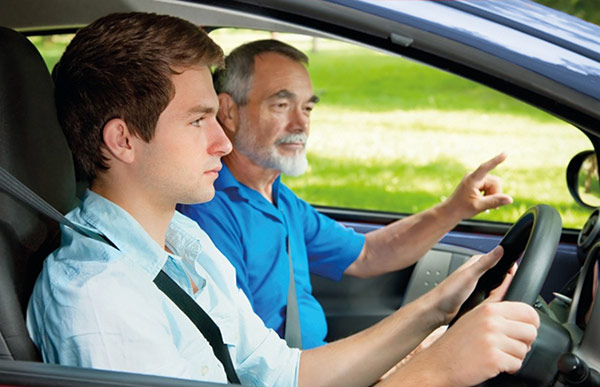Is the driving test getting more difficult?
The recent changes to the UK driving test begs the question, have these changes increased the difficulty of the driving test? While the principal of the test has remained the same for over 80 years, aspects of it have changed in order to make way for the changing conditions of today’s roads.
In December 2017, changes made by the DVSA meant that ‘3 point turns’ and reversing around corners were removed from the test. Whilst driving using a sat nav was introduced and longer test duration.
Driving Test Pass Rates
These changes have seemed to have little impact on the average pass rate across the country. Since last December, pass rates have decreased slightly to 45.5%. This does mean, however, that it’s dropped below 46% for the first time since 2010. Although, last years pass rate was 46.8%. Meaning it’s a relatively small decrease, and over the last 10 years, it has fluctuated slightly.
Theory Test Changes
In 1997, the practical test and theory test became separate, and there have been many changes to the theory test since. Statistics have also shown that changes to the theory test have had a great impact on overall pass rates, compared to changes to the practical test. The changes in 2007 resulted in the number of questions increasing from 35 to 50, and in 2012, the new theory test questions stopped being released to the public online. Furthermore, in November this year, new hazard perception videos were added. These include a variety of new extreme weather conditions, such as snow and sleet.
Big problems involving driving tests
For the last 10 years, incorrectly observing traffic at junctions has been at the top for the reason for failing driving tests. This has been followed closely by incorrect or insufficient use of mirrors.
- Observation at junctions
- Failing to check mirrors
- Control of steering wheel
- Turning right at junctions
- Failing to move off safely from a stationary position
- The positioning of a car on the road
- Stalling or accelerating quickly when starting
- Response to traffic lights
- Reverse park control
- Response to traffic signs
Most people will make a least one fault during their driving test, yet some make an outstanding zero mistakes. In 2017 / 18, 17,950 passed without a single minor mistake, which accounts for just 1% of test takers.
Passing the First Time
You’re more likely to fail on your first attempt than pass. On your second attempt your pass rate increases. Surprisingly, after your second, the pass rate falls again and continues to fall after subsequent tests. Last year, 15,000 people attempted their driving test for the 6th time, and their average pass rate is 38%. Compared to the first time pass rate of 46.8%.
Age Matters
The driving test seems to favour the young, with around 66% of people sitting the test being under 25, and this age category being the most successful. The performance of other age groups suggests that the test gets harder the older you get. With 17-year-olds having a 55% pass rate, 18 to 24 with 46%, 25 to 34 with 38%, 45 to 54 with 35% and 55+ with 34%.
Whilst younger drivers have the highest pass rate, they’re also far more likely to get into accidents after they’ve passed. Despite 17 to 19-year-olds only making up 1.5% of drivers, they’re responsible for 9% of fatal and serious crashes where they were the driver.
The Driving Test Overall
Overall, the pass rates have mostly remained stable. More difficult tests may have resulted in learners undergoing more training with instructors or practice with a family member. Resulting in pass rates remaining unchanged. Many argue the test hasn’t gotten harder, but more targeted towards real-life driving and the scenarios you’re more likely to face.
It’s important to remember that the test isn’t there to judge the level of your driving skills, but rather how safe you are, and the changes made reflect this. The old driving test spends a disproportionate amount of time on low-risk roads, so that manoeuvres could be carried out. Whereas the new manoeuvres, test the same skills but are far more representative of the type of problems drivers are likely to encounter in their everyday driving. Meaning you’ll be far more ready for real-world driving and will hopefully have less stress when you do pass.

